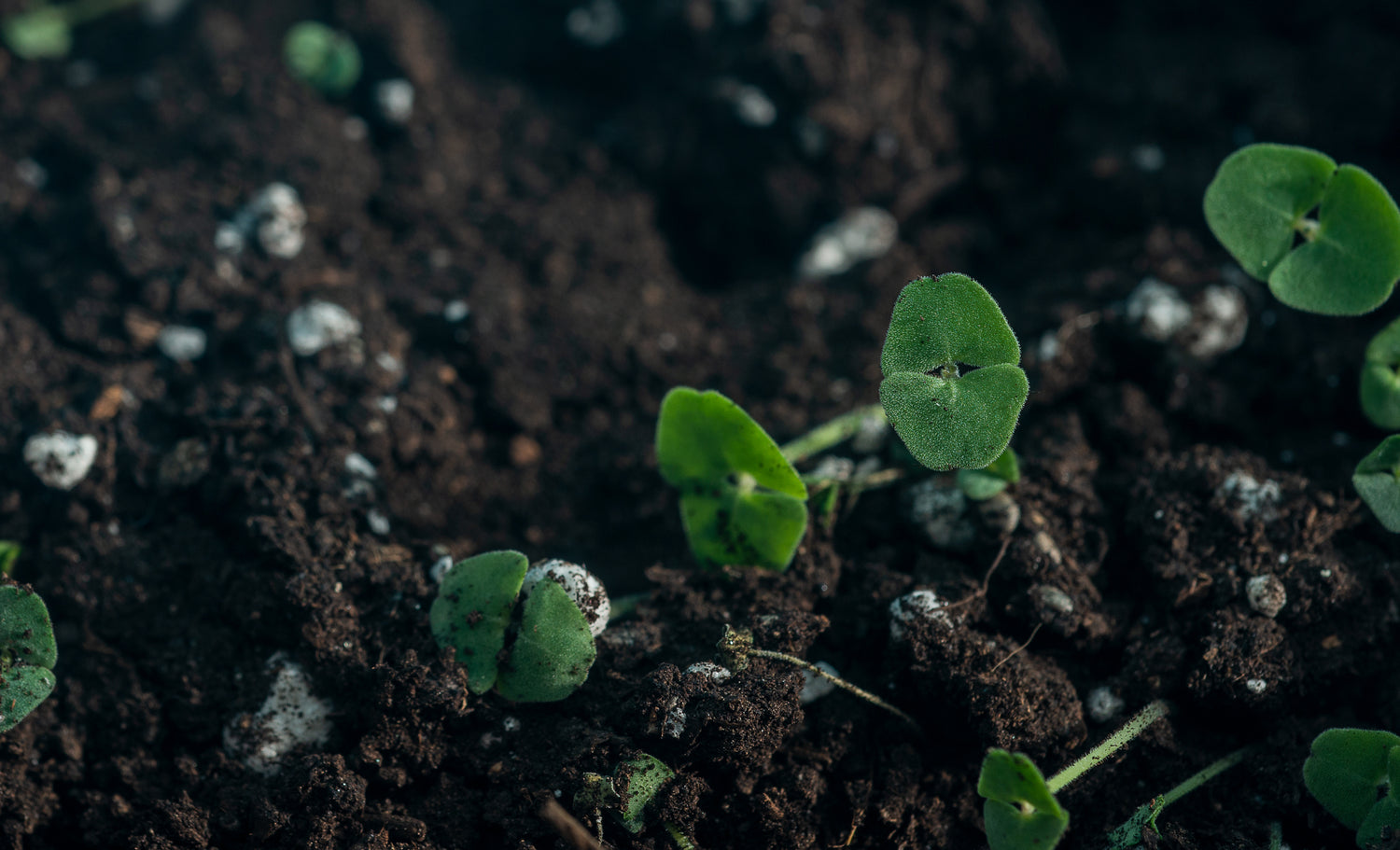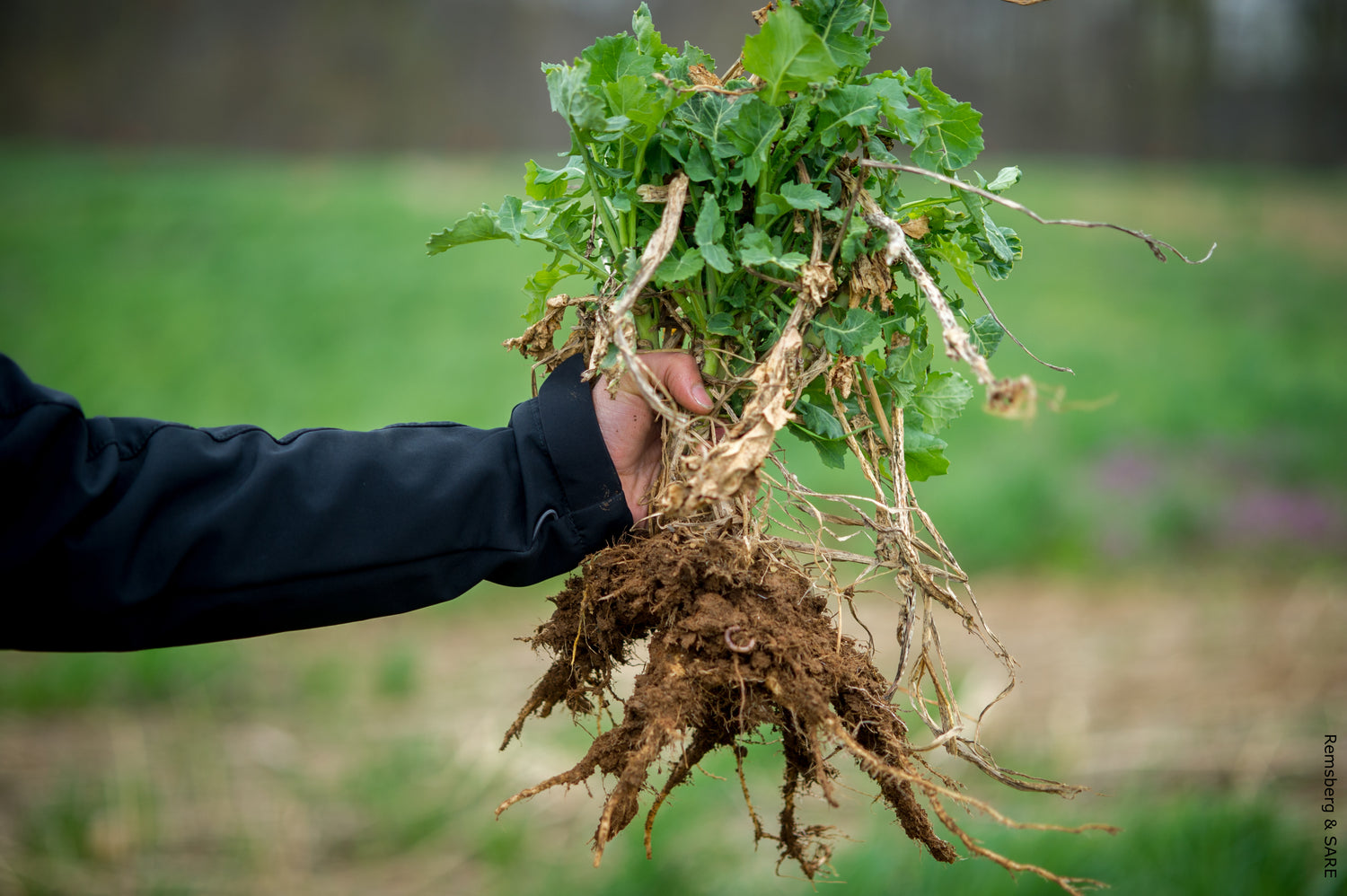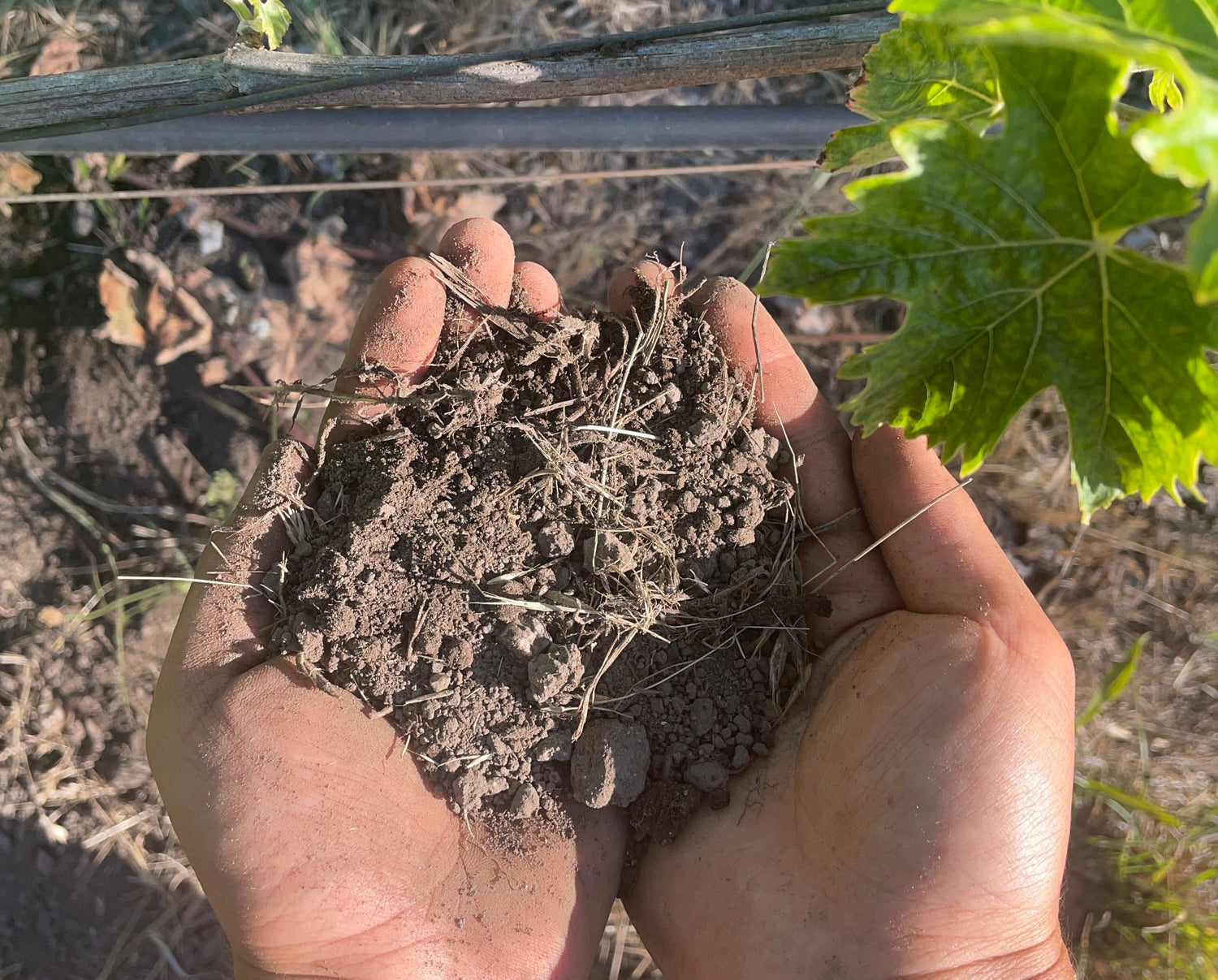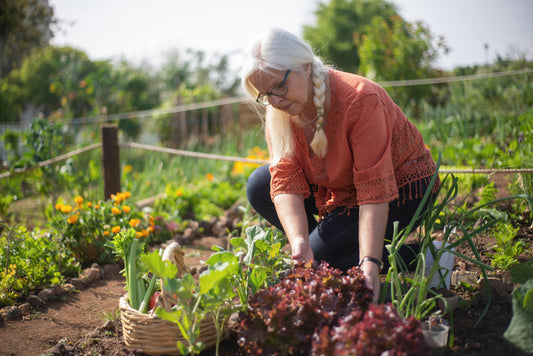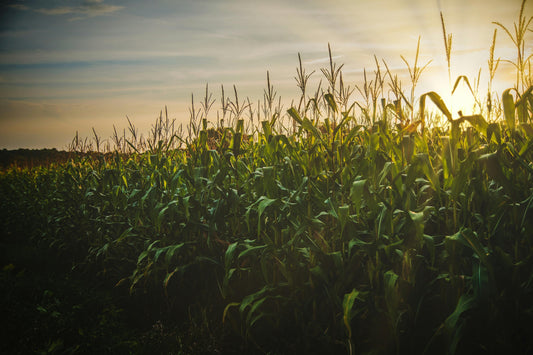Cannabis cultivation success depends heavily on understanding your soil's complex chemistry, biology, and regulatory requirements. Proper soil testing provides the scientific foundation for optimizing growing conditions, preventing costly disease outbreaks, and ensuring compliance with rapidly evolving state cultivation laws.
Cannabis Soil Testing: Complete Guide to Organic Growing & pH Management
Effective cannabis soil testing requires measuring pH levels (6.0-7.0 optimal range), essential nutrients including nitrogen (194 mg/L optimal) and phosphorus (59 mg/L optimal) based on recent research, organic matter content (3-5% target), soil texture, drainage characteristics, and pathogen presence to create ideal growing conditions while complying with state-specific cultivation regulations.
Understanding Cannabis Soil Health Fundamentals
Healthy soil provides the foundation for vigorous cannabis growth by supporting extensive root development, nutrient cycling, and beneficial microbial activity. Organic cannabis cultivation relies entirely on soil biology and natural nutrient processes rather than synthetic fertilizers, making soil health assessment critical for success.
Soil structure affects water retention, drainage, and root penetration throughout the cannabis root zone. Well-structured soil contains adequate pore space for air movement while retaining sufficient moisture for plant needs during both vegetative and flowering phases of the cannabis lifecycle.
Recent research demonstrates that beneficial microorganisms in healthy soil break down organic matter, cycle nutrients, and protect plants from pathogens through complex biological processes that become particularly important in organic systems where synthetic inputs are avoided. These biological processes include mycorrhizal relationships that enhance nutrient uptake and disease resistance.
Soil testing reveals the current status of these critical factors and guides management decisions to optimize growing conditions for cannabis production while identifying potential disease risks and nutrient imbalances before they impact plant health.
State-Specific Cannabis Cultivation Regulations
As of 2025, 24 states plus Washington D.C., Puerto Rico, Guam, the Northern Mariana Islands, and the U.S. Virgin Islands allow adult-use cannabis cultivation, with plant limits typically ranging from 4-12 plants per household depending on local regulations. Understanding state-specific requirements is essential before beginning cultivation.
California allows up to 6 plants for recreational users with county-specific variations, Michigan permits 12 plants for adults over 21, while Missouri restricts home cultivation to registered medical patients with 6-plant limits. Many states require secure, non-visible growing areas and impose strict penalties for exceeding plant limits.
California's Department of Cannabis Control requires licensed cultivators to follow specific environmental regulations including water quality management, proper waste disposal, and soil protection measures. Minnesota requires cannabis businesses to minimize environmental impact through proper hazardous waste management and soil protection protocols.
Compliance with state regulations often includes soil testing requirements, contamination monitoring, and environmental impact assessments that directly relate to soil health management practices.
Critical Soil Testing Parameters for Cannabis
Soil pH: The Foundation Factor
Soil pH controls nutrient availability and biological activity, making it the most critical factor in cannabis soil management. Research consistently demonstrates that the optimal pH range of 6.0-7.0 ensures maximum nutrient uptake and healthy root function for cannabis plants.
pH levels outside this range can lock out essential nutrients even when they're present in adequate amounts. Acidic soils (below 6.0) may limit phosphorus and calcium availability, while alkaline soils (above 7.0) can restrict iron and zinc uptake, leading to visible nutrient deficiencies.
Regular pH monitoring becomes essential as organic amendments, irrigation water quality, and plant nutrient uptake can gradually shift soil pH over time, particularly in container growing systems.
Optimal Nutrient Requirements Based on Current Research
Recent peer-reviewed research using response surface analysis determined that cannabis inflorescence yield responds quadratically to nitrogen and phosphorus, with optimal concentrations of 194 mg/L nitrogen and 59 mg/L phosphorus for soilless production systems. These findings provide science-based targets for soil nutrient management.
Primary macronutrients include nitrogen for vegetative growth and chlorophyll production, phosphorus for root development and flowering initiation, and potassium for overall plant health, stress resistance, and terpene production. Studies indicate that cannabis metabolism of phytocannabinoids is highly sensitive to both mineral and organic nutrition management.
Secondary nutrients like calcium and magnesium support cell wall formation and chlorophyll production, while micronutrients including iron, zinc, and manganese enable various metabolic processes essential for cannabinoid and terpene synthesis.
Organic Matter and Biological Activity
Organic matter content indicates soil fertility potential and biological activity levels. Research shows that target levels of 3-5% organic matter provide adequate nutrition release and support beneficial soil organisms that enhance cannabis growth under outdoor conditions.
Higher organic matter improves water retention in sandy soils and drainage in clay soils while providing slow-release nutrients throughout the growing season. Studies demonstrate that cannabis plants grown in organic soils harbor more diverse beneficial microflora compared to conventional hydroponic cultivation systems.
Soil biological assessment helps determine the activity level of beneficial microorganisms that cycle nutrients, suppress plant pathogens, and enhance overall plant health through complex soil ecosystem interactions.
| Parameter | Optimal Range | Research-Based Importance for Cannabis |
|---|---|---|
| pH | 6.0-7.0 | Controls nutrient availability and prevents lockout |
| Nitrogen (N) | 194 mg/L (research optimal) | Critical for vegetative growth and cannabinoid production |
| Phosphorus (P) | 59 mg/L (research optimal) | Essential for root development and flowering yield |
| Potassium (K) | 100-200 ppm | Improves stress resistance and terpene production |
| Organic Matter | 3-5% | Supports soil biology and slow-release nutrients |
| Cation Exchange Capacity | 10-20 meq/100g | Determines nutrient retention and availability |
Cannabis Soil Pathogens and Disease Prevention
Current research identifies over 88 fungal species affecting cannabis plants at all growth stages, with the most common soil-borne pathogens being Fusarium oxysporum and F. solani for stems and roots, causing crop losses estimated at over 10% in commercial operations.
The most critical soil-related diseases include root rots caused by Fusarium and Pythium species, powdery mildew (Golovinomyces species), and post-harvest mold contamination from Penicillium and Aspergillus species that can pose serious health risks to consumers.
Studies reveal that Penicillium bud rot, Botrytis bud rot, and Fusarium bud rot are present to varying extents on cannabis inflorescences, with endophytic fungi including soil-colonizing species present in crown, stem, and petiole tissues.
Research demonstrates that infested growing medium (including soil) can introduce initial inoculum of root-infecting pathogens and mold contaminants if not adequately sterilized, making soil testing for pathogen presence a critical component of integrated disease management.
Regional Disease Pressures and Seasonal Patterns
Israeli research identified seasonal patterns in cannabis fungal pathogens, with Alternaria alternata most common during spring and autumn when temperatures are moderate and humidity levels are elevated. Similar patterns likely occur in comparable climatic regions.
Understanding regional disease pressures helps cultivators time soil treatments and implement preventive measures before optimal pathogen conditions develop. Soil testing should include pathogen screening in areas with known cannabis disease histories.
Professional Soil Testing Methods and Interpretation
Laboratory Analysis for Cannabis Cultivation
Professional laboratory testing provides comprehensive soil analysis including complete nutrient profiles, pH, organic matter, cation exchange capacity, soil texture analysis, and pathogen screening. Laboratory methods use standardized protocols that ensure accurate, repeatable results essential for cannabis quality control.
Cannabis-specific lab testing typically costs $50-150 depending on the scope of analysis but provides detailed information for precision soil management. Results include specific recommendations for organic amendments, pH adjustment, and pathogen mitigation strategies.
Timing laboratory tests 2-4 weeks before planting allows time to implement recommended soil improvements and allow amendments to integrate with existing soil biology while addressing any identified pathogen issues.
On-Site Testing Tools for Cannabis Growers
Digital pH meters provide quick, accurate pH readings for routine monitoring throughout the growing cycle. Quality meters offering ±0.1 pH accuracy are sufficient for most cannabis cultivation applications and essential for maintaining optimal nutrient uptake conditions.
Portable pH meters enable testing multiple locations and monitoring pH changes over time in response to irrigation water quality, organic amendments, and plant nutrient uptake patterns. Regular calibration with standard buffer solutions ensures continued accuracy.
Combination meters measuring pH, moisture, and temperature provide additional useful information for irrigation management and environmental monitoring in both indoor and outdoor growing systems.
Proper Soil Sampling for Cannabis Applications
Accurate soil sampling ensures test results represent actual root zone conditions where cannabis plants develop their extensive feeder root systems. Poor sampling techniques can lead to misleading results and inappropriate management decisions that impact plant health and compliance.
Collect samples from multiple locations within the growing area, taking cores 6-8 inches deep where most cannabis feeder roots develop. For container growing systems, sample from different pots and growing medium batches to identify variability.
Use clean, sterile sampling tools and containers to avoid contamination that could affect pathogen screening results. Avoid sampling immediately after fertilizer application or during unusually wet or dry conditions that may skew nutrient availability results.
Sample timing affects results significantly, so establish consistent sampling schedules for tracking changes over time. Pre-season testing provides baseline data for planning amendments, while mid-season testing helps identify developing problems.
Interpreting Cannabis Soil Test Results
Understanding cannabis-specific soil test results enables appropriate management responses to optimize growing conditions for both medical and recreational cultivation. Test reports typically include current levels, optimal ranges for cannabis, and specific recommendations for organic amendments.
Nutrient levels may be reported in different units (ppm, mg/L, percentage) requiring conversion for practical application, with recent research providing specific targets of 194 mg/L nitrogen and 59 mg/L phosphorus for optimal cannabis production.
Consider interactions between nutrients when interpreting results for cannabis cultivation. High levels of one nutrient can interfere with uptake of others, requiring balanced amendment approaches that maintain proper nutrient ratios for optimal cannabinoid production.
Pathogen screening results require immediate attention if positive, as soil-borne diseases can rapidly spread through cannabis growing operations and compromise product safety for medical patients.
Organic Amendment Strategies for Cannabis
pH Management for Cannabis Cultivation
Organic pH adjustment uses natural materials to gradually modify soil chemistry for long-term stability. Agricultural limestone raises pH in acidic soils, while elemental sulfur or organic acids can lower pH in alkaline conditions over time.
Wood ash provides quick pH elevation along with potassium, but should be used sparingly to avoid over-alkalization that can lock out micronutrients. High-quality compost helps buffer pH changes and provides gradual, sustainable pH management through biological processes.
Cannabis-specific pH management requires careful monitoring as the crop is sensitive to pH fluctuations that can rapidly impact nutrient availability and plant health during critical growth phases.
Research-Based Organic Nutrient Sources
Research demonstrates that biostimulants including manure tea, bioinoculants, and humic acid products can increase cannabis height, chlorophyll content, photosynthetic efficiency, and biomass production significantly under outdoor growing conditions.
Compost provides balanced, slow-release nutrition while improving soil structure and supporting beneficial soil biology. Quality cannabis compost should be fully decomposed, pathogen-free, and tested for heavy metal contamination to ensure product safety.
Targeted organic fertilizers address specific cannabis nutrient needs: bone meal for phosphorus (supporting flowering), kelp meal for potassium and trace elements (enhancing stress resistance), and fish emulsion for readily available nitrogen during vegetative growth.
Cover crops and green manures provide nitrogen fixation, organic matter enhancement, and erosion control between growing cycles. Leguminous cover crops like clover can significantly increase soil nitrogen levels while supporting beneficial soil microorganisms.
Biological Soil Enhancement for Cannabis
Mycorrhizal inoculants enhance cannabis root nutrient uptake and stress resistance by forming beneficial fungal partnerships, with research showing these biological amendments work particularly well in organic cannabis cultivation systems.
Studies indicate that beneficial microorganisms including Trichoderma harzianum and Metharhizium anisopliae can provide biological control against root diseases while supporting overall plant health in cannabis growing systems.
Compost teas and biological stimulants increase beneficial microbial populations that cycle nutrients, suppress harmful pathogens, and enhance the soil-plant interface critical for cannabis health and productivity.
Environmental Compliance and Sustainability
Cannabis cultivation is water-intensive, with plants consuming approximately 22.7 liters (6 gallons) per day during the growing season, significantly higher than many commodity crops. Proper soil management can improve water use efficiency and reduce environmental impact.
California's Cannabis Cultivation General Order requires growers to implement erosion control measures, proper fertilizer and pesticide management, and soil protection protocols to prevent water quality degradation. These requirements directly relate to soil testing and management practices.
Sustainable cannabis cultivation involves soil conservation practices, organic matter enhancement, cover cropping, and reduced tillage methods that build soil health while meeting regulatory requirements and maintaining product quality standards.
Monitoring and Adjustment Throughout the Growing Cycle
Ongoing soil monitoring throughout the cannabis growing cycle helps identify developing problems before they severely impact plant health, yields, or compliance with quality standards. Weekly pH checks and monthly nutrient monitoring provide early warning systems for management decisions.
Plant tissue testing complements soil testing by revealing how effectively cannabis plants are utilizing available soil nutrients. Leaf analysis can identify deficiencies not apparent from soil tests alone, particularly important for high-value cannabis crops.
Soil conditions change throughout the cannabis growing cycle due to plant nutrient uptake, microbial activity, environmental factors, and irrigation management. Regular monitoring enables timely adjustments to maintain optimal conditions while documenting compliance with state regulations.
Pathogen monitoring should continue throughout the growing cycle, particularly during humid conditions or when using recycled growing media that may harbor disease organisms from previous crops.
Frequently Asked Questions
What is the ideal soil pH for cannabis?
The ideal soil pH for cannabis is 6.0-7.0, which allows optimal nutrient availability and root function. This slightly acidic to neutral range ensures plants can access all essential nutrients effectively while preventing nutrient lockout that can severely impact yields.
How often should I test cannabis soil?
Test cannabis soil before each growing cycle and every 2-3 months during continuous cultivation. Monthly testing is recommended when using organic amendments, detecting nutrient deficiencies, or in areas with known soil pathogen issues.
What nutrients are most important for cannabis soil?
Research shows cannabis requires optimal nitrogen (194 mg/L) and phosphorus (59 mg/L) levels, along with balanced potassium, calcium, magnesium, and micronutrients like iron and zinc. Organic matter content of 3-5% is critical for supporting soil biology and nutrient cycling.
Which states allow home cannabis cultivation?
As of 2025, 24 states plus Washington D.C. allow adult-use cannabis cultivation at home, with plant limits typically ranging from 4-12 plants per household. Additional states permit medical cultivation with valid patient cards. Always check current local regulations before beginning cultivation.
What are the most common cannabis soil diseases?
The most common soil-borne cannabis pathogens include Fusarium oxysporum and F. solani (root and stem rot), Pythium species (root rot), Botrytis cinerea (gray mold), and various Penicillium species. Proper soil sterilization, pH management, and pathogen screening prevent most disease issues.
Can I use regular garden soil for cannabis?
Regular garden soil can work if properly tested, sterilized, and amended. Most garden soils need organic matter additions, pH adjustment, pathogen screening, and nutrient optimization to create ideal conditions for cannabis cultivation while meeting quality and safety standards.
How do I prevent soil-borne cannabis diseases?
Prevent soil-borne diseases through proper soil sterilization, maintaining optimal pH (6.0-7.0), ensuring adequate drainage, using pathogen-free growing media, implementing crop rotation, and regular soil testing for pathogen presence. Beneficial microorganisms can provide additional disease suppression.
What environmental regulations affect cannabis soil management?
Cannabis cultivation must comply with state-specific environmental regulations including water quality protection, proper waste disposal, soil erosion control, and contamination monitoring. Many states require environmental impact assessments and ongoing compliance documentation related to soil management practices.
Conclusion
Bottom Line: Effective soil testing forms the foundation of successful cannabis cultivation by providing essential information for optimizing growing conditions, preventing disease outbreaks, and ensuring compliance with evolving state regulations. Understanding critical parameters including pH (6.0-7.0 optimal), research-based nutrient targets (194 mg/L nitrogen, 59 mg/L phosphorus), organic matter content (3-5%), and pathogen presence enables cultivators to create ideal soil environments that support healthy plant development, maximize cannabinoid yields, and maintain product safety standards.
Through regular professional soil testing, appropriate organic amendments, ongoing monitoring, and integrated disease management, cannabis cultivators can maintain soil health while producing high-quality crops using sustainable, compliant methods. The combination of scientific soil management, state regulatory compliance, and environmental stewardship represents the future of responsible cannabis cultivation that benefits both cultivators and consumers while protecting our natural resources.
Sources
- USDA Natural Resources Conservation Service. Soil Health Resources. https://www.nrcs.usda.gov/resources/guides-and-instructions/soil-health
- Punja, Z.K. (2021). Emerging diseases of Cannabis sativa and sustainable management. Pest Management Science, 77(9), 3857-3870. https://www.ncbi.nlm.nih.gov/pmc/articles/PMC8451794/
- Bevan, L., et al. (2021). Optimisation of Nitrogen, Phosphorus, and Potassium for Soilless Production of Cannabis sativa in the Flowering Stage. Frontiers in Plant Science, 12, 764103. https://www.ncbi.nlm.nih.gov/pmc/articles/PMC8635921/
- California Department of Cannabis Control. Water Board Cannabis Cultivation Requirements. https://www.waterboards.ca.gov/water_issues/programs/cannabis/faqs.html
- Shiponi, S. & Bernstein, N. (2021). The highs and lows of P supply: Phosphorus effects on cannabis sativa flowering. Frontiers in Plant Science, 12, 657223.
- Jerushalmi, S., et al. (2020). Fungal Pathogens Affecting the Production and Quality of Medical Cannabis in Israel. Plants, 9(7), 882. https://www.mdpi.com/2223-7747/9/7/882
- Lyu, D., et al. (2024). Effect of organic biostimulants on cannabis productivity and soil microbial activity under outdoor conditions. Journal of Cannabis Research, 6, 8. https://jcannabisresearch.biomedcentral.com/articles/10.1186/s42238-024-00214-2
- Minnesota Pollution Control Agency. Cannabis Business Environmental Regulations. https://www.pca.state.mn.us/business-with-us/cannabis-businesses
- Cornell University Soil Health Lab. Comprehensive Soil Assessment. https://soilhealth.cals.cornell.edu/
- Rodale Institute. Organic Soil Health Research. https://rodaleinstitute.org/science/soil-health/
- USDA Organic Standards and Regulations. https://www.ams.usda.gov/about-ams/programs-offices/national-organic-program







